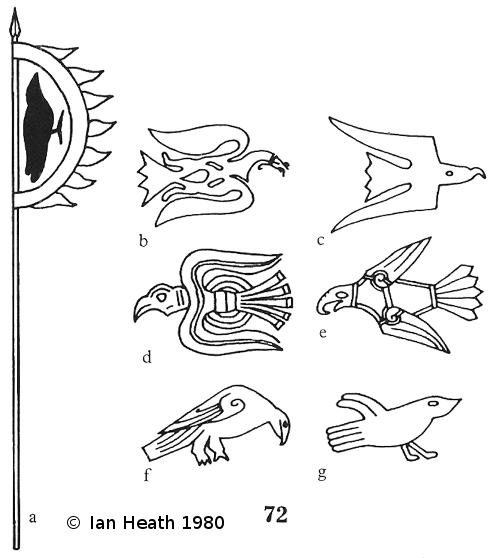
72. VIKING STANDARDS
An extract from Armies of the Dark Ages 600-1066by Ian Heath

72. VIKING STANDARDS
Scandinavian standards were called gunnefanes or ‘war-flags’ (French gonfanons). Asser records a Viking standard captured in 878 to have been called ‘Reafan’ (Raven), and various other sources also record Black Raven standards. For example the 11th century Encomium Emmae records a raven standard of white silk, and Earl Sigurd of Orkney’s standard at Clontarf was so shaped that when the wind caught it it looked like a raven in flight. Saxon sources also record that if the raven fluttered it meant a Viking victory, but if it drooped it meant a defeat. Scandinavian sources, however, do not actually record such standards anywhere, though we can feel sure that they existed, and it is nice to think of Harald Hardrada’s famous ‘Landeythan’ (Landwaster) as carrying a raven device. Certainly other devices were also in use, Olaf Tryggvasson having a white standard with a serpent on it, and it was probably such fanged and winged monsters that were intended by the Annales Fuldensis’ description of Viking standards as ‘signia horibilia’.
72a shows the only Norman banner in the Bayeux Tapestry that is not merely a geometric pattern. Bearing in mind the Normans’ Viking ancestry it seems a reasonable assumption that this is a late example of a Black Raven standard.
72b-g are from contemporary Scandinavian art. 72b and c are from Gotland picture stones, 72d is from a 10th century Viking coin from Dublin, 72e from a Norwegian picture stone, 72f from Thorvald’s Cross on the Isle of Man, and 72g from the Oseberg Tapestry. Some portray eagles rather than ravens but they are characteristic of the execution of birds in Viking art.